- Login

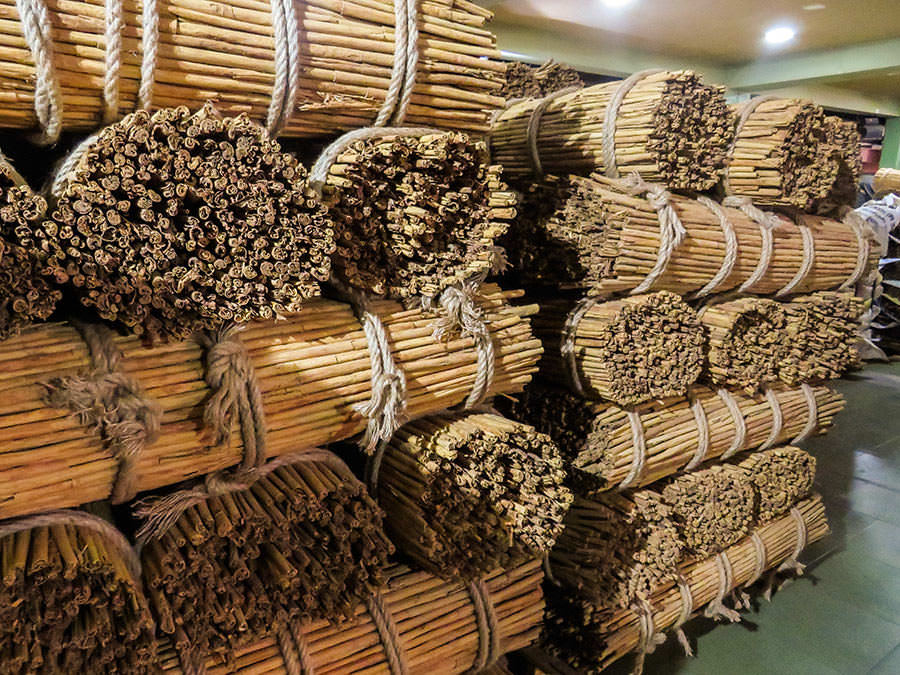
I told them the only thing I wanted to do in Sri Lanka was see a cinnamon tree. Even after years as a Spice Trekker, the idea still blows my mind: this is the edible tree, the one tree of all trees, whose bark we eat. We couldn’t care less about its fruit or seeds! Sure, you could point to a few other examples of strange tree uses: Greek mastic, for example, comes from a kind of pistachio sap, and no Canadian company can forget maple syrup (we love it in chai). But I knew I had to see the bizarre tree-turned-shoot firsthand if I was ever going to believe it happens.
So when they asked what I wanted out of our first spice sourcing trip to Sri Lanka, I simply said, “see a real cinnamon tree.” We had the great fortune of being hosted by longtime family friends and suppliers, Deepa and Sanath, who wanted nothing more than to show us around Sri Lanka and help me make this absurd abstraction a reality.
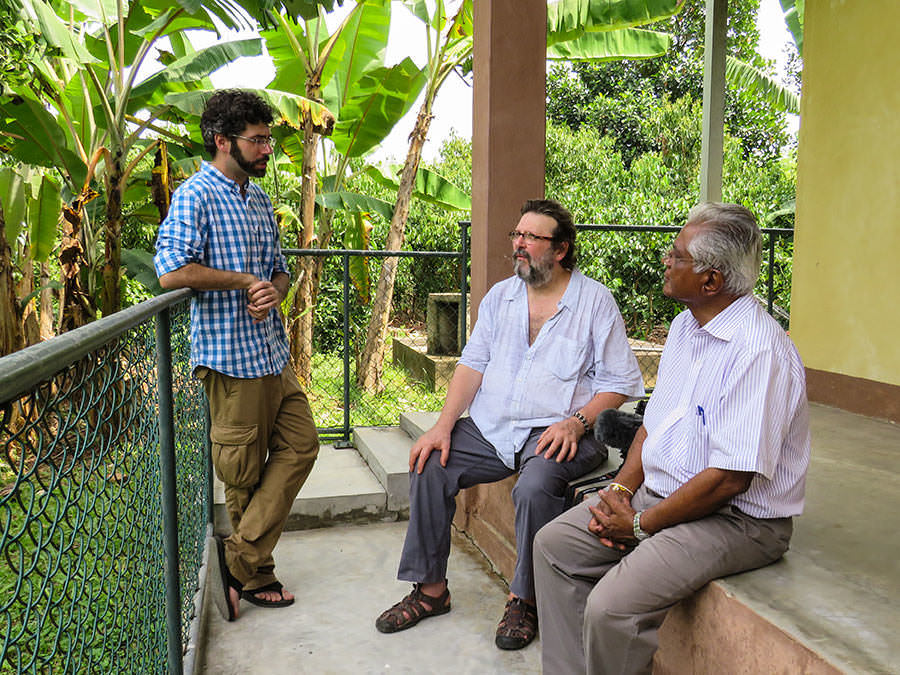
Let’s remember I’m talking about Ceylon cinnamon, or true cinnamon, which is more delicate and flavorful than its cousin, Vietnamese cinnamon, or cassia. Ceylon cinnamon has been the darling cash crop of Sri Lanka for millennia, its origins shrouded in mystery. Spice traders put such effort into keeping its provenance secret that Europeans didn’t know it came from a tree for centuries!
I thought I knew a lot about cinnamon (it is, after all, my job) when I pressed Sanath for details on its cultivation. I quickly realized I had stumbled into an ancient and complex world, not unlike a child wandering midway into an adult conversation asking, “where does cinnamon come from?”
“Well, son, it all starts with a tree.”
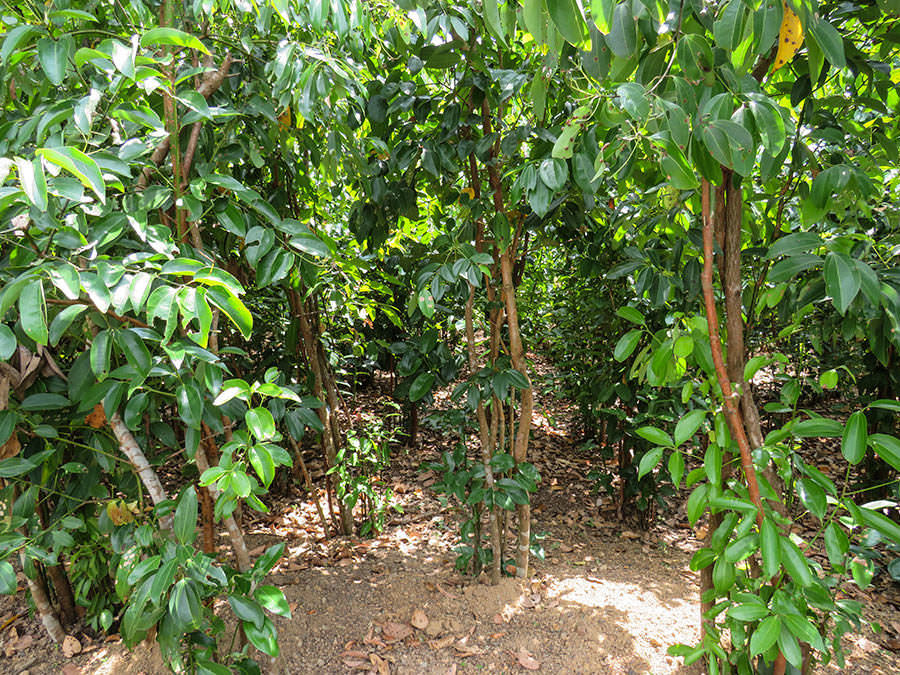
Like a child learning the facts of life for the first time, I listened with enraptured disgust at the great manipulation this living thing is exposed to before it becomes useful to us.
The cinnamon tree grows up differently from the trees you know. It starts like any other, happy in its natural environment: hot and humid, well-watered, well drained, and with plenty of sun. Its first 3 or 4 years are like any other tree, until one day, a year before it is to be harvested, it is coppiced and discarded.
The process is described as “pruning,” but it seemed more like “cutting down” to me. I mean, they cut the whole tree down to the stump and cover it with dirt. It looks dead. We’ll never know what madman first thought to linger for a few months and see whether or not this dead tree comes back to life, but whoever it was would have been delighted to see the little cinnamon shoots popping out of the stump, supple and full of flavor.
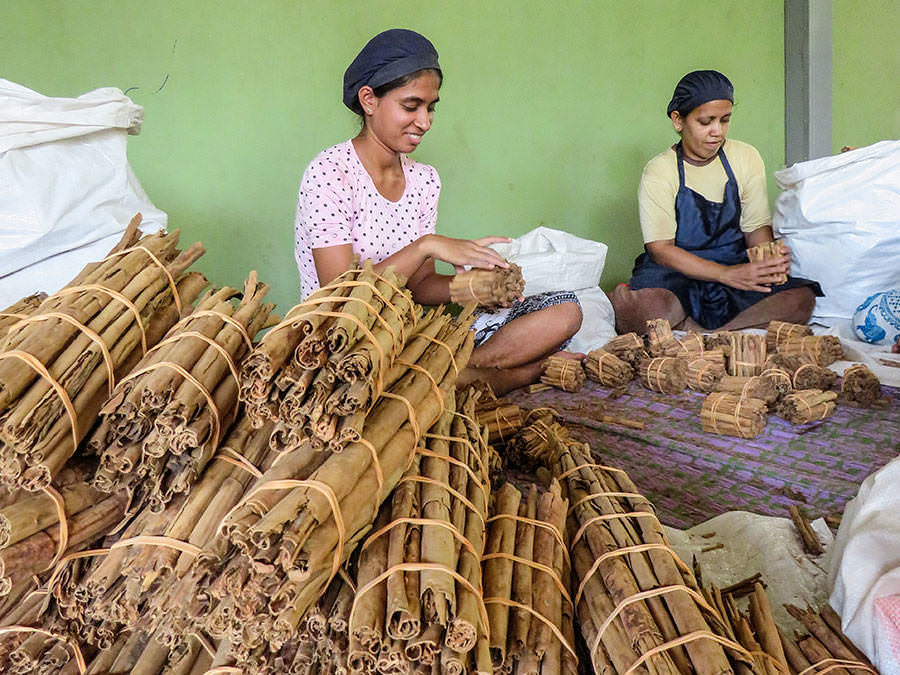
It is these shoots, young, tender, but packed with the chemical content of a fully-matured tree, that will become the sought after spice. Let’s be clear: cinnamon sticks can only come from meticulously cultivated trees. This is quite unlike cousin cassia, whose thick bark can actually improve with age. A mature cassia tree in Indonesia can fetch a high price on the fine spice market. But who even wants to see a fully-grown cinnamon tree?
Sri Lanka, and much of South Asia in fact, is littered with mature cinnamon trees, growing as would an elm or maple in North America. Of course the sight of a 50- year-old cinnamon tree is interesting to me, but it was almost an eyesore to the locals. This plant is beyond commercial use, even for its leaves, which are now too bitter to eat (quality cinnamon leaves come from a much younger tree).
We grow it to cut it down, only to cut it down again. If that isn’t weird enough for you, you should see what happens to the poor shoots after they’re collected!
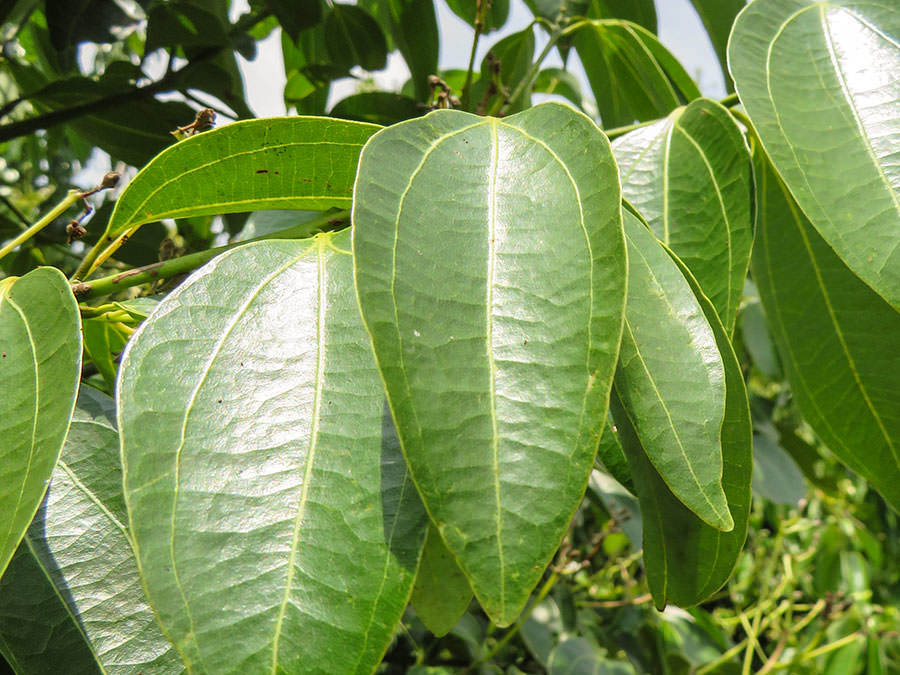
It was impressive seeing row after row of those plucky young cinnamon shoots at the cinnamon plantation. My first thoughts were for the deranged ancestors who once buried a young cinnamon stump, and to the artisans who continue to obsess over mere millimeters of tree bark for my benefit. Sanath was so casual about mastering an arcane technique that was known to so few, and so generous with his knowledge. And the trees, the lovely trees, working so hard to produce the volatile oils we know and love.
Did I get what I wanted? Better still, I got something I didn’t even know I wanted. I didn’t just make the bizarre process a reality, I came to love the process. I came to love the tree. I might even grow my own decorative cinnamon tree! There’s something about seeing a fellow living thing endure such torment, emerging as something entirely different and undeniably beneficial to others. If only people were more open to such weirdness.
Steven Allison studied as a food geographer and has been hunting spices and teas since 2008. He fell in love with all things Chinese food during the six years he lived there. He is particularly enamored by the cuisine of Sichuan and Yunnan, in the southwest, inspired perhaps by first love, the cooking of his native southwestern US. Steve cannot refuse a sandwich, wrap, or burrito, and is known to add unreasonable amounts of Silk Road blend in his cooking.